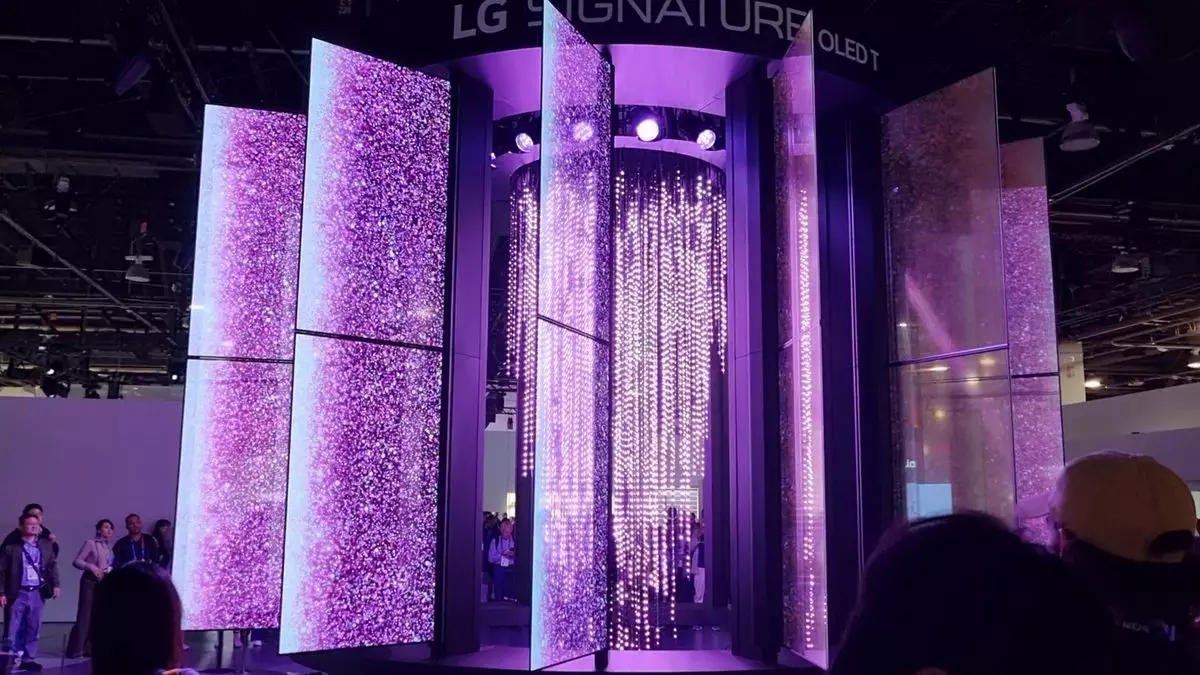The world of consumer electronics is often a dazzling display of innovation, filled with products that both inspire and intrigue. One of the latest spectacles at CES 2025 in Las Vegas is the advent of transparent displays, exemplified by LG’s striking transparent TV. These displays, with their futuristic appeal, draw in spectators and enthusiasts alike, prompting a glimpse into potential future living environments. However, a critical examination reveals that the practical applications of such technology remain dubious at best.
Transparent displays have gradually become a poignant point of discussion among tech aficionados. While their aesthetic value is undeniable — creating a mesmerizing view that can blend seamlessly into various settings — the question arises: how functional are they really? At a glance, they provide a theatrical quality to exhibitions and trade shows, effectively captivating audiences. But once the initial wonder subsides, it becomes evident that the practical uses of these devices may not extend beyond the realm of spectacle.
Having recently attended CES 2025, I found myself entranced by the spectacular LG exhibit, showcasing their transparent technology in an elaborate presentation. The display consisted of 77-inch OLED panels orchestrated to create a captivating display that seemingly floated in mid-air, highlighted against the backdrop of a chandelier. Such elaborate setups are designed to engage and impress visitors, but they only hint at the underlying reality that these screens may not be designed for everyday use.
The sheer cost alone, with each unit priced at around $60,000, raises significant barriers for potential buyers. While I felt a temporary draw towards the aesthetic beauty of this technology, I quickly recognized that no one needs a transparent television in their home. The practicality of daily usage pales in comparison to the allure they hold as exhibition artifacts or futuristic novelties. It begs the question: are these products ultimately more for show than for genuine utility?
While transparent displays certainly can dazzle the eye, other offerings at CES 2025 provided alternatives that are likely to resonate more with gamers. For instance, the 163-inch Micro LED TCL X11H Max made a powerful impression with its incredible specifications: nanosecond-level response times and the ability to reach brightness levels of 10,000 nits. A true gaming powerhouse, this monitor could transform the gaming experience, enveloping players in a vibrant, high-dynamic-range world.
However, this outstanding performance comes at a staggering price tag of $110,000 — a reminder that top-tier technology often occupies a luxury niche. The concept of playing titles like Forza Horizon 5 on such a colossal screen is compelling, almost enticing; however, it is essential to consider the balance between ambition and practicality in the realm of consumer technology. While these products dazzle at trade shows, they rarely translate into viable options for average consumers.
As I sift through the extravagance and excitement of technology expos like CES, it is vital to maintain a critical perspective regarding emerging trends, particularly with innovations like transparent displays. While they repeatedly draw attention and admiration, they often do so as fleeting novelties rather than solutions to real-world problems. Their potential is more akin to that of an art installation than a functional piece of home technology.
Despite their visual appeal, the practicality of such displays in day-to-day life remains questionable. In a marketplace brimming with advanced devices that prioritize functionality alongside aesthetic value, transparent displays appear to remain on the periphery, tantalizing but ultimately lacking in real-world application. As tech enthusiasts continue to pursue innovation, the challenge lies in balancing wonder with utility — and for now, the promise of transparent displays is a vivid reminder that not all glittering technology will result in practical treasure.

